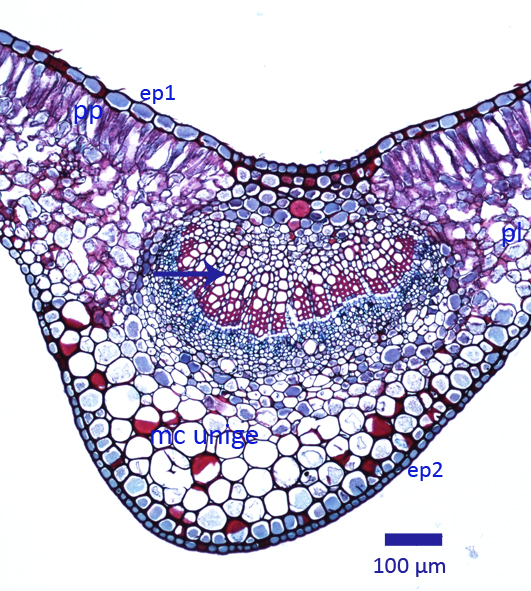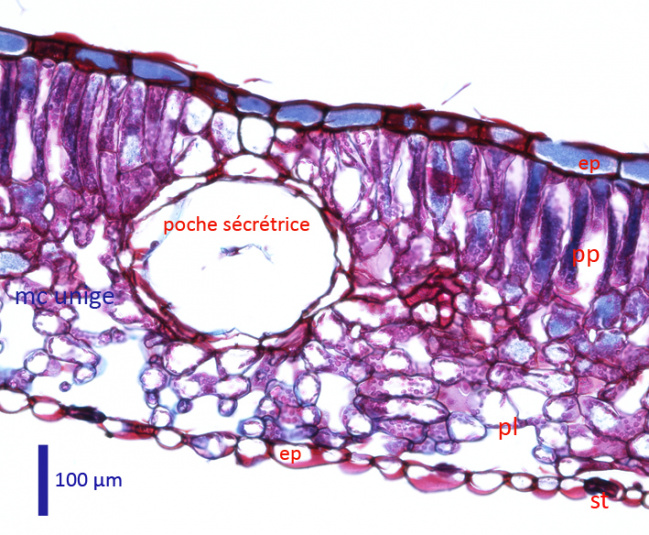Cross section in a leaf of Hypericum perforatum.
Saint-John’s-wort, genus Hypericum of nearly 500 species in the family Hypericaceae is native to temperate and tropical areas. The species name perforatum refers to the presence of numerous tiny holes on the leaves. The holes correspond to numerous translucent glands that give impression that leaves are pierced. St John’s wort is generally an herbaceous herb 30 – 75 cm in height. However, it can grow to 10 meters and forms shrubs or even trees. H. perforatum has high medicinal value for 3000 years and is widely uses today as an antidepressant.
The leaves are small, elliptical and the edge of the leaf is entire without teeth. The surfaces are glabrous.
Part of the section at the level of the main vein (blue arrow). ep1 and ep 2: epidermis of ad axial and ab axial faces.
pp: palisade parenchyma; pl: spongy parenchyma.

Part of the section without the main vein: the mesophyll is heterogeneous with palisade parenchyma (pp) toward adaxial face and spongy parenchyma (pl) toward abaxial face. There is a large gland in the mesophyll and stomata on the abaxial epidermis. St: stomata.
